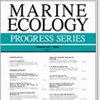Complex positive interactions among rocky shore sessile species
IF 2.1
3区 环境科学与生态学
Q2 ECOLOGY
引用次数: 0
Abstract
ABSTRACT: Positive interactions are important drivers of community structure and ecosystem functioning and may involve benefactor and beneficiary species directly in contact with each other, or spatially separated. On a Mediterranean coast, we examined the possible set of interactions linking 3 key taxa: the barnacle Chthamalus stellatus, the annual alga Rissoella verruculosa, which forms a belt at lower shore levels, and epilithic microphytobenthos (EMPB), widely distributed on all substrata across the mid- and high intertidal zones. We predicted that barnacles could stimulate R. verruculosa growth (through nutrient-rich excretions washed from high to low shore) and EMPB biomass and photosynthetic activity (through the same mechanism or by providing favourable habitat among calcareous shells). In turn, R. verruculosa could act as a secondary facilitator for EMPB by buffering physical stress underneath its fronds. We tested this model through an experiment involving the complete removal or killing (without removal) of C. stellatus crossed with the removal of R. verruculosa. We did not find any effect of barnacles on R. verruculosa during the period of development of algal fronds (March, April, May). In summer (July and August, when algal fronds had been lost), EMPB biomass was smaller where barnacles and algae had been removed. These results negate facilitation of R. verruculosa by C. stellatus, but they indicate positive effects of both species on EMPB. Our study provides an example of adjacent facilitation on intertidal rocky shores, likely mediated by physical mechanisms, and suggests that effects on beneficiary species can persist after the loss of the macroscopic form of the benefactor.岩岸无梗物种之间复杂的正相互作用
摘要:良性互动是群落结构和生态系统功能的重要驱动力,可能涉及直接接触的受益物种和受惠物种,也可能涉及空间上分离的物种。在地中海沿岸,我们研究了连接三个关键类群的可能的相互作用:藤壶(Chthamalus stellatus)、一年生藻类 Rissoella verruculosa(在较低的海岸水平形成一个带状)和附石微底栖动物(EMPB)(广泛分布于潮间带中段和高段的所有底层)。我们预测藤壶(通过从高岸冲到低岸的富含营养的排泄物)和 EMPB(通过相同的机制或在钙质贝壳中提供有利的栖息地)可以刺激疣螈的生长以及 EMPB 的生物量和光合作用。反过来,疣鼻蛺蛺可能通过缓冲其叶片下的物理压力,成为 EMPB 的次要促进因素。我们通过一项实验验证了这一模型,该实验涉及完全移除或杀死(不移除)C. stellatus 和移除 R. verruculosa。我们没有发现藤壶在藻类叶片发育期间(3 月、4 月和 5 月)对 R. verruculosa 有任何影响。在夏季(7 月和 8 月,藻类叶片脱落),藤壶和藻类被移除的地方 EMPB 生物量较小。这些结果否定了疣鼻溞(R. verruculosa)对星藻(C. stellatus)的促进作用,但表明这两个物种对 EMPB 都有积极影响。我们的研究提供了潮间带岩石海岸相邻促进作用的一个实例,这可能是由物理机制介导的,并表明受益物种在失去宏观形式的受益者后仍会受到影响。
本文章由计算机程序翻译,如有差异,请以英文原文为准。
求助全文
约1分钟内获得全文
求助全文
来源期刊

Marine Ecology Progress Series
环境科学-海洋学
CiteScore
5.30
自引率
8.00%
发文量
238
审稿时长
3 months
期刊介绍:
The leading journal in its field, MEPS covers all aspects of marine ecology, fundamental and applied. Topics covered include microbiology, botany, zoology, ecosystem research, biological oceanography, ecological aspects of fisheries and aquaculture, pollution, environmental protection, conservation, and resource management.
 求助内容:
求助内容: 应助结果提醒方式:
应助结果提醒方式:


